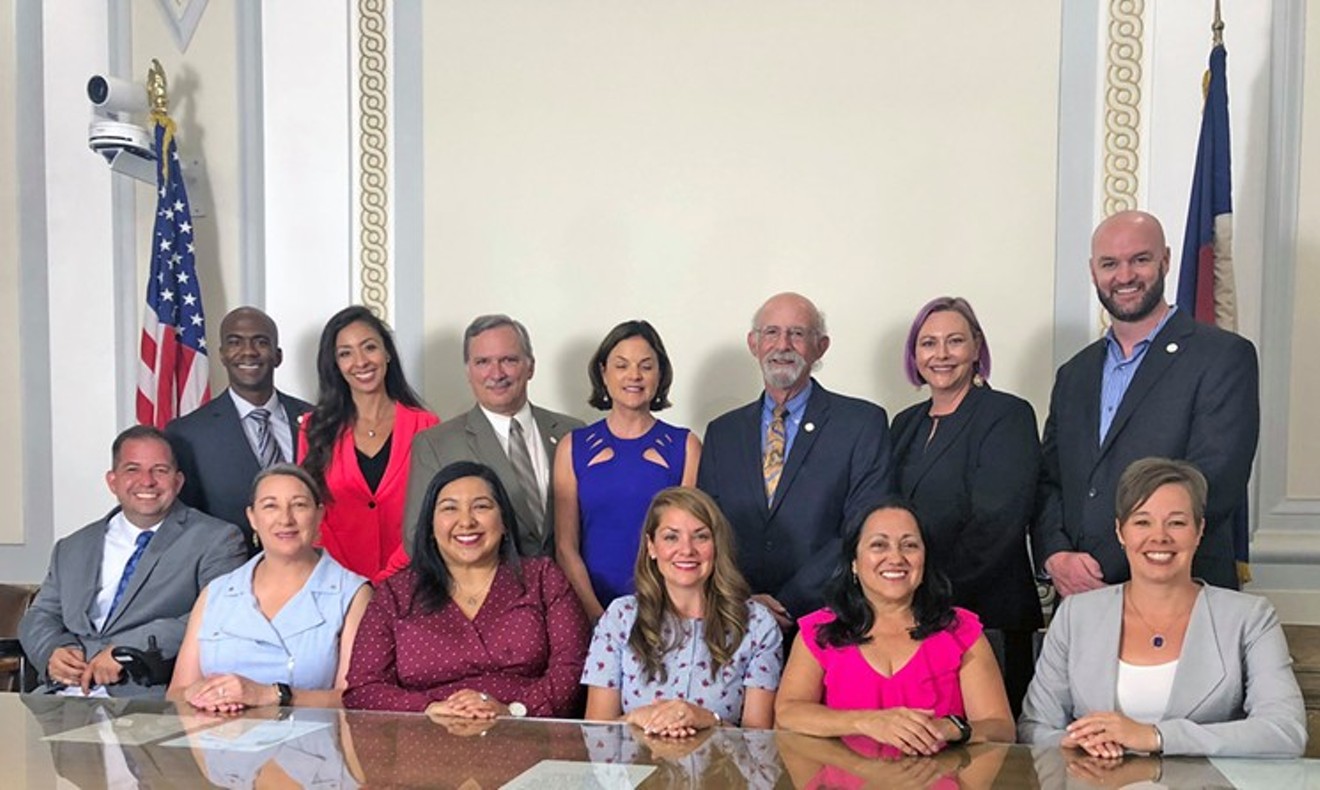In an 11-2 vote after a marathon meeting that started on February 8 and ended this morning, Denver City Council approved a massive overhaul to the group-living aspects of the Denver Zoning Code.
"In Denver, we deserve to have a package that is progressive — and especially right now, during a pandemic, when people need more resources," Councilwoman Amanda Sandoval said during the meeting before voting in favor of the proposal. "I wholeheartedly support this and the entire package."
The ordinance increases the number of unrelated adults who can live together in the same home from two to five, and also makes it easier for service providers to set up residential-care facilities, such as halfway houses, sober-living homes and homeless shelters, throughout Denver.
The changes regarding those facilities inspired the two "no" votes. "My concerns with the residential-care side will be too numerous to support," Councilwoman Amanda Sawyer said before voting against the proposal. Councilman Kevin Flynn also opposed the measure.
Council finally voted on the proposal after a meeting that pushed past 1 a.m. and featured testimony from over 100 members of the public. Two-thirds of those expressed support for the measure, while the others had concerns about various provisions in it.
One resident worried that more communal-living situations like the 24/7 "frat house" next door to her home might pop up: "There were four people on the lease, who had ten people living there and fifteen cars, and they turned their garage into a strip club that opened up after the bars closed. I heard that every single night, and no one would help me. No one."
Another woman suggested that the changes allowing more group homes would lead to "white filght," and asked, "How many pit bulls would they have?"
"The opposition to this is not political," said another resident. "The opposition to this is by citizens of all colors, all ages, all political bents."
During the meeting, Councilwoman Kendra Black decried "the misinformation" that some opponents had spread in the run-up to the vote. "While it’s clear that there is a very vocal opposition group from my district, they do not speak for my entire district," she said.
Aside from the public comments from individuals who had signed up to speak, council received over 1,143 letters regarding the proposal: 619 in favor and 524 against.
The vote came after three years of work to update the group-living aspects of the Denver Zoning Code by the Department of Community Planning and Development. Planners began working on the overhaul in late 2017: A ten-year moratorium on the construction of new halfway houses was set to expire in mid-2018, and they wanted to determine how the code could be changed to make more room for halfway houses.
"Since 2008, our halfway houses and community corrections have been in a time capsule. I do not think that’s progressive policy," Sandoval noted during the meeting.
As they looked over the zoning code, planners saw other group-living issues that needed to be addressed, and decided to merge those into a single project that would come up with one proposal. In 2018, CPD staffers formed a Group Living Advisory Committee made up of sober-living home operators, communal-living proponents, and halfway house and homeless shelter operators, among others, to help guide the project. An August 2019 council decision to reject the renewal of halfway house contracts with two private prison companies increased the city's interest in figuring out a zoning fix.
In January 2020, the senior planner on the project, Andrew Webb, unveiled key aspects of a draft proposal. Even though he subsequently watered down certain provisions — reducing the number of unrelated adults who could live in a single household from eight to five, for example — opposition became intense.
Last August, a handful of Denver residents formed Safe and Sound Denver, a group that sent out dozens of listserv emails and produced YouTube videos that railed against the changes, arguing that they would lead to a degradation of public safety and increased on-street parking.
One of Safe and Sound Denver's major criticisms was that the zoning amendment would only apply to parts of the city zoned under the current Denver Zoning Code, and would not change the zoning for over 20 percent of the city still zoned under the former Chapter 59 zoning code.
In response to that concern, CPD committed to introducing an amendment in the near future that would increase the number of unrelated adults who could live in a single household in former Chapter 59 areas, such as Green Valley Ranch and Central Park. That amendment, however, would not address other aspects of the group-living zoning overhaul.
"CPD will spend some time this year looking at what resources it will take to continue the work of rezoning the city into one zoning code, which is our ultimate goal," Webb said at the February 8 council meeting.
In the meantime, though, the majority of Denver will fall under these new group-living zoning rules. "I am proud of this final proposal," concluded Councilwoman Robin Kniech. "I’m proud of both the policy changes that it makes."
See the final amendment here:
[
{
"name": "Air - MediumRectangle - Inline Content - Mobile Display Size",
"component": "12017618",
"insertPoint": "2",
"requiredCountToDisplay": "2"
},{
"name": "Editor Picks",
"component": "17242653",
"insertPoint": "4",
"requiredCountToDisplay": "1"
},{
"name": "Inline Links",
"component": "18838239",
"insertPoint": "8th",
"startingPoint": 8,
"requiredCountToDisplay": "7",
"maxInsertions": 25
},{
"name": "Air - MediumRectangle - Combo - Inline Content",
"component": "17261320",
"insertPoint": "8th",
"startingPoint": 8,
"requiredCountToDisplay": "7",
"maxInsertions": 25
},{
"name": "Inline Links",
"component": "18838239",
"insertPoint": "8th",
"startingPoint": 12,
"requiredCountToDisplay": "11",
"maxInsertions": 25
},{
"name": "Air - Leaderboard Tower - Combo - Inline Content",
"component": "17261321",
"insertPoint": "8th",
"startingPoint": 12,
"requiredCountToDisplay": "11",
"maxInsertions": 25
}
]












